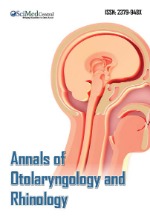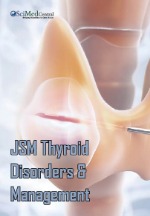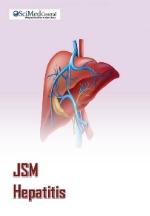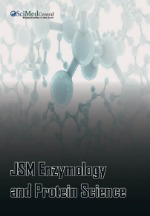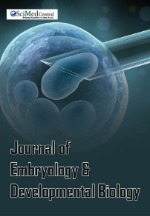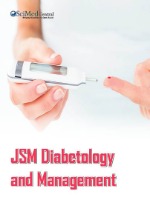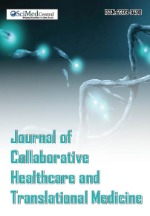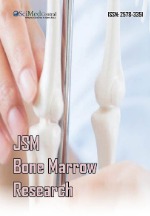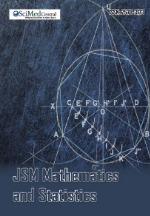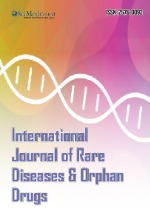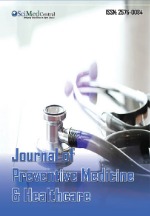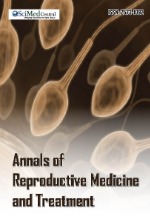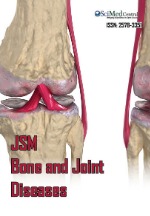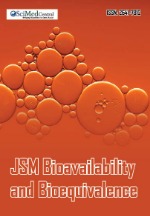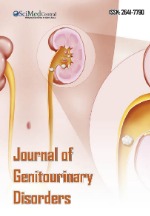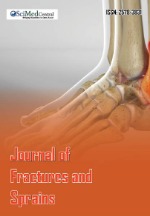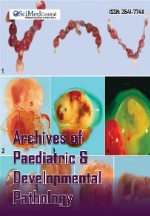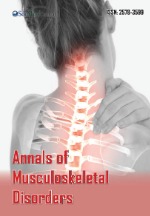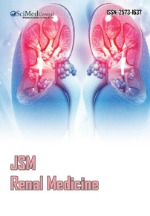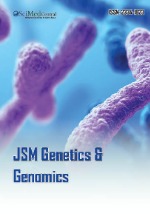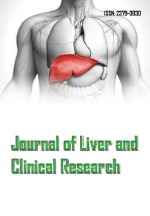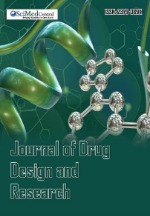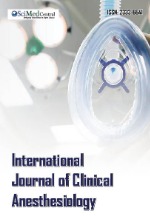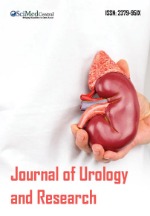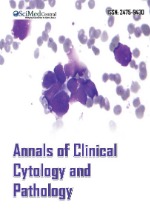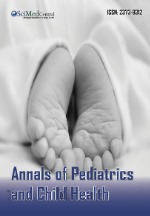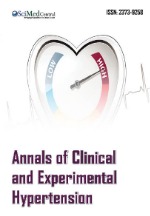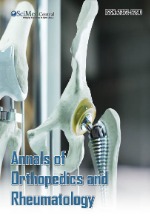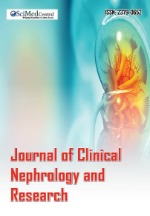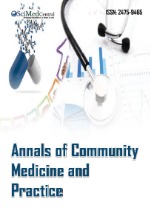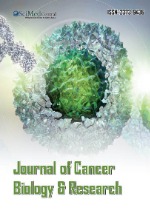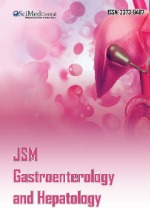Quantitative Blood Loss (QBL) Obviates the Need for Postpartum Day 1 Complete Blood Count in Uncomplicated Vaginal Deliveries
- 1. Anne Burnett School of Medicine, Texas Christian University, USA
- 2. Department of Obstetrics and Gynecology, University of Texas Health Science Center, United States
Abstract
Objective: Obtaining a complete blood count (CBC) on postpartum day 1 (PPD1) is common to identify postpartum anemia. With many providers now measuring quantitative blood loss (QBL) instead of estimated, our study shows that the clinical utility of routine PPD1 CBC collection has decreased and is costly for uncomplicated vaginal deliveries when starting hematocrit (Hct) is ≥35 and QBL <1000cc.
Methods: A retrospective chart review was conducted on spontaneous vaginal deliveries (SVDs) from 1/1/2021 to 1/31/2022 at a level IV maternity center at an academic institution. Exclusion criteria included: QBL ≥1000mL, starting Hct <35, or no documented QBL. Patients were categorized based on QBL: <500mL, 501-749mL, and 750-999mL. Pre- and post-QBL Hct values were compared.
Results: The total number of deliveries was 2427, with 1253 meeting inclusion criteria. Among these, 922 had QBL <500mL, 240 had QBL 501-749mL, and 91 had QBL 750-999mL. The difference between pre- and post-QBL Hct levels was positively correlated with increased QBL, r = 0.22, p < 0.001. One patient in the 750-999mL group received a transfusion for symptomatic anemia, with hemoglobin >7 and hematocrit >21. The cost of a PPD1 CBC was $70; total cost for included deliveries was $87,710.
Conclusion: Routine PPD1 CBC in patients with starting Hct ≥35 lacks clinical utility for QBL <750mL, has limited utility for QBL 750-999mL, and incurs financial costs. Eliminating PPD1 CBC is recommended for QBL <750mL and should be considered for QBL 750-999mL.
KEYWORDS
- Postpartum anemia
- Quantitative Blood Loss
- Vaginal Deliveries
- Complete Blood Count
- Postpartum Hemorrhage
CITATION
Duican C, Stansbury N, Creedon D (2024) Quantitative Blood Loss (QBL) Obviates the Need for Postpartum Day 1 Complete Blood Count in Uncomplicated Vaginal Deliveries. Med J Obstet Gynecol 12(2): 1188.
ABBREVIATIONS
PPD1: Postpartum Day 1; CBC: Complete Blood Count; SVD: Spontaneous Vaginal Delivery; QBL: Quantitative Blood Loss
INTRODUCTION
Untreated anemia can be severe in the vulnerable postpartum state and places patients at risk for lethargy, physical weakness, poor concentration, decreased breast milk supply, poor wound healing, and a predisposition to postnatal depression [1-4]. The leading cause of postpartum anemia is postpartum bleeding, particularly postpartum hemorrhage, which is the fourth leading cause of maternal mortality in the United States. It is estimated that 70% of PPH maternal mortality cases are preventable but occur due to delayed recognition and treatment of significant blood loss following birth [5]. The main risks for developing postpartum anemia include placenta previa, abruption, prolonged third stage, preeclampsia, prior postpartum hemorrhage, current or prior cesarean delivery, intra-amniotic infection, starting hemoglobin and hematocrit, and most notably estimated blood loss during delivery [6,7].
Several recent state-sponsored initiatives to reduce the morbidity associated with postpartum hemorrhage have emerged in recent years. In Texas, 97% of hospitals that provide obstetric services participated in the TexasAim initiative to decrease PPH. Adherence to TexasAim involves 1) Identifying patients at risk for PPH before delivery, 2) performing quantitative blood loss (QBL) on all deliveries, and 3) initiating protocols for treating PPH [8].
Although the importance of identifying and treating postpartum anemia is well established, existing literature does not provide clear recommendations for how and when to screen for postpartum anemia; as a result, clinical practice varies based on provider preference and individual institutional protocols. Even before the widespread transition to measuring QBL rather than EBL, the concept of routine postpartum CBC collection was challenged. Nicol et al. (199x) found that a postpartum day-one complete blood count (PPD1 CBC) was unnecessary in low-risk patients with an EBL of less than 500mL, though it is the current method of assessing for postpartum anemia in many U.S. institutions. For most patients post-uncomplicated SVD, the PPD1 CBC is superfluous, rarely impacts clinical management, and has financial implications for patients.
Historically, the criteria for categorization of patients as “low risk” for developing postpartum anemia has been too stringent and eliminates most patients from consideration [9]. Dar et al. (199x), performed a retrospective cohort study and found that all patients who received a blood transfusion had an identifiable risk factor for postpartum hemorrhage, a documented postpartum hemorrhage, or were symptomatic following delivery [10]. This study was conducted when the accepted threshold for PPH in a vaginal delivery was 500ml, though current ACOG guidelines have redefined PPH for both vaginal and cesarean delivery as blood loss greater than 1000ml [11]. Our study aims to accurately identify patients at low risk for postpartum anemia according to current guidelines and prevent unnecessary screening in this patient population.
One of the primary motivators to identify low-risk patients is the financial burden of PPD1 CBCs; Ton et al., recently described a protocol for targeted PPD1 CBCs that decreased PPD1 CBC collection by 50% and projected annual savings of $160,000 [12]. However, the study by Ton et al., was only a one-month pilot study, and postpartum hemorrhage was described as an exclusion criterion with greater than 500mL of blood loss. Additionally, the study did not involve PPD1 CBC collection to evaluate if asymptomatic anemia was being missed [12].
To assess the utility of routine postpartum CBC following all uncomplicated SVDs, we established objective, inclusive, and standardized inclusion criteria to simultaneously decrease PPD1 CBC collection while not missing asymptomatic anemia. We hypothesized that patients with a starting hematocrit (Hct) greater than or equal to 35 and a QBL less than 1000mL would not require a blood transfusion based on PPD1 CBC findings. The primary objective of this study was to evaluate if routine PPD1 CBC in low-risk patients was necessary to diagnose postpartum anemia requiring blood transfusion. A secondary objective was to identify the potential cost savings to our hospital if PPD1 CBCs were eliminated in low-risk patients.
MATERIALS AND METHODS
A retrospective chart review was performed on all SVDs from 1/1/2021 and 1/31/2022 at a single-site level IV maternity center at an academic institution. Exclusion criteria were: QBL³1000mL, starting hematocrit <35, or no documented QBL. Patients were divided into three groups based on QBL: <500mL, 501-749mL, and 750-999mL. Hematocrit levels were obtained before and after QBL, and data was collected for patients receiving blood transfusions. It was determined that the project did not require IRB approval because it was not regulated research.
RESULTS AND DISCUSSION
The total number of deliveries was 2427 with 1253 deliveries included (Figure 1).
Figure 1: Flow diagram outlining inclusion and exclusion criteria.
The number in each group was QBL <500 ml: 922, 501- 749mL: 240, and QBL 750-999mL: 91. The difference between pre- and post-QBL hematocrit levels was positively correlated with increased QBL, r = 0.22, p-value < 0.001 (Figure 2).
Figure 2: Scatter plot reflecting the change in hematocrit before and after QBL.
Among all included deliveries, one patient in the QBL 750-999mL group received a blood transfusion (Table 1).
Table 1: Blood loss grouping by Transfusion status
|
Variable |
Level |
No |
Yes |
P-value |
|
n |
|
1252 |
1 |
|
|
QBL (%) |
<500ml |
876 (70.0) |
0 (0.0) |
0.006 |
|
|
501-749ml |
264 (21.1) |
0 (0.0) |
|
|
|
750-999ml |
112 (8.9) |
1 (100.0) |
|
Abbreviations: QBL: Quantitative Blood Loss
However, this transfusion was given due to symptomatic anemia, with the patient’s hemoglobin and hematocrit being greater than 7 and 21, respectively. The cost of a PPD1 CBC at our institution was $70. Therefore, the total cost of PPD1 CBCs for included deliveries was
$87,710.
Our study demonstrated objective and inclusive criteria for identifying patients as low risk for postpartum anemia, which can be used to safely eliminate the need for a routine PPD1 CBC in all postpartum patients following uncomplicated SVD. The primary outcome demonstrated that patients with a starting hemoglobin greater than or equal to 35 and a QBL less than 1000mL did not require a blood transfusion based on PPD1 CBC results during our 13-month analysis. The secondary outcome demonstrated the potential for financial savings of nearly $90,000 at our institution upon discontinuing routine PPD1 CBCs on low-risk patients. The cost savings outlined by our analysis only included the cost of the PPD1 CBCs at our hospital; the collection of PPD1 CBCs also involves nursing personnel, laboratory staff running and uploading the CBC, and clinicians reviewing the results. The expenditure of time and effort by providers in the process of CBC collection was not evaluated by our study.
Our study addressed several limitations of current literature assessing the clinical utility of routine PPD1 CBCs. First, existing literature has yet to establish criteria for a “low risk” patient population and excludes patients from studies according to risk factors for postpartum hemorrhage, operative vaginal deliveries, and chorioamnionitis. Our study offers simple inclusion criteria that apply to most patients, fostering enhanced clinical utility in a multitude of settings. Second, there is no existing literature evaluating blood loss < 1000mL according to the newly established definition of PPH by ACOG guidelines. In accordance with the changing guidelines, our study hypothesized all patients with blood loss <1000mL could be categorized as low risk.
Our study demonstrated that patients with blood loss between 500mL-999mL are at low risk for postpartum anemia requiring transfusion. None of the patients with a starting Hct greater than or equal to 35 required a blood transfusion based on PPD1 CBC results. Finally, widespread adoption and the increased clinical accuracy of QBL have changed obstetric practice due to its superiority to EBL (14-25). However, before this study, no literature existed on the routine collection of PPD1 CBCs in the setting of QBL utilization. During our 13-month analysis, each patient’s blood loss was evaluated quantitatively. Our results suggest that PPD1 CBCs lack the clinical utility they may have possessed previously when blood loss was estimated rather than quantified.
The study was limited by the fact that it was a retrospective chart review conducted at a single-site level IV maternity center at an academic institution. Furthermore, nearly 40% of the deliveries in the analysis were excluded due to patients having a Hct of less than 35. The clinical utility of PPD1 CBCs should be further investigated in patients with a Hct lower than 35. Our study seeks to eliminate the ambiguity in existing protocols that include signs or symptoms of anemia; we encourage the provider’s discretion for the collection of PPD1 CBC based on patient complaints, physical exams, and/or vital signs.
CONCLUSION
Overall, we propose the discontinued routine use of PPD1 CBC in low-risk patients after uncomplicated vaginal delivery, specified as those with starting Hct ≥35 and QBL <750ml, though PPD1 CBC in patients with QBL <1000mL may also be unnecessary. Our objective protocol will allow institutions to perform routine PPD1 CBCs on excluded patients while encouraging clinical discretion in for ordering PPD1 CBC in low-risk patients.
REFERENCES
- Bhandal N, Russell R. Intravenous iron versus oral iron therapy for postpartum anaemia. BJOG. 2006; 113: 1248-1252.
- Atkinson L, Baxley E. Postpartum fatigue. Am Fam Physician. 1994; 50: 113-118.
- Kalaivani K. Prevalence and consequences of anaemia in pregnancy. Ind J Med Res. 2009; 130: 627-633.
- Henly SJ, Anderson CM, Avery MD, Hills-Bonczyk SG, Potter S, Duckett LJ. Anemia and insufficient milk in first-time mothers. Birth. 1995; 22: 86-92.
- Main EK, Goffman D, Scavone BM, Low LK, Bingham D, Fontaine PL, et al. National partnership for maternal safety: consensus bundle on an obstetric hemorrhage. J Midwifery Womens Health. 2015; 126: 155-162.
- Bergmann RL, Richter R, Bergmann KE, Dudenhausen JW. Prevalence and risk factors for early postpartum anemia. Eur J Obstet Gynecol Reprod Biol. 2010; 150: 126-131.
- Rubio-Álvarez A, Molina-Alarcón M, Hernández-Martínez A. Incidence of postpartum anaemia and risk factors associated with vaginal birth. Women and birth. J Australian College of Midwives. 2018; 31: 158-165.
- Riley LE, Stark AR, eds. Guidelines for Perinatal Care, 7th ed. Washington, DC: American Academy of Pediatrics and the American Congress of Obstetrics and Gynecology; 2012.
- Nicol B, Croughan-Minihane M, Kilpatrick SJ. Lack of value of routine postpartum hematocrit determination after vaginal delivery. Obstet Gynecol. 1997; 90: 514-518.
- Dar S, Vardi IS, Holcberg G, Reuveni H, Yerushalmi R, Katz M, et al. Do we need routine complete blood count following vaginal delivery? Int J Fertil Womens Med. 2006; 51: 270-273.
- Quantitative Blood Loss in Obstetric Hemorrhage: ACOG COMMITTEE OPINION SUMMARY, Number 794. Obstet Gynecol. 2019; 134: 1368-1369.
- Wormer KC, Jamil RT, Bryant SB. Postpartum Hemorrhage. [Updated 2024 Jul 19]. In: StatPearls [Internet]. Treasure Island (FL): StatPearls Publishing; 2024
- Jessica T, Matthew W, Sheetal S. A Targeted Postpartum CBC Protocol for Uncomplicated Vaginal Deliveries [40H]. Obstet Gynecol. 2017; 129: 93.
- Schorn MN. Measurement of blood loss: review of the literature. J Midwifery Womens Health. 2010; 55: 20-27.
- Toledo P, Eosakul ST, Goetz K, Wong CA, Grobman WA. Decay in blood loss estimation skills after web-based didactic training. Simul Healthc. 2012; 7: 18-21.
- Katz D, Khadge S, Carvalho B. Comparing Postpartum Estimated and Quantified Blood Loss among Racial Groups: An Observational Study. Cureus. 2022; 14: e25299.
- Petersen LA, Lindner DS, Kleiber CM, Zimmerman MB, Hinton AT, Yankowitz J. Factors that predict low hematocrit levels in the postpartum patient after vaginal delivery. Am J Obstet Gynecol. 2002; 186: 737-744.
- Al Kadri HM, Al Anazi BK, Tamim HM. Visual estimation versus gravimetric measurement of postpartum blood loss: a prospective cohort study. Arch Gynecol Obstet. 2011; 283: 1207-1213
- Prasertcharoensuk W, Swadpanich U, Lumbiganon P. Accuracy of the blood loss estimation in the third stage of labor. Int J Gynaecol Obstet. 2000; 71: 69-70.
- Razvi K, Chua S, Arulkumaran S, Ratnam SS. A comparison between visual estimation and laboratory determination of blood loss during the third stage of labour. Aust N Z J Obstet Gynaecol. 1996; 36: 152- 154.
- Newton M, Mosey LM, Egli GE, Gifford WB, Hull CT. Blood loss during and immediately after delivery. Obstet Gynecol. 1961; 17: 9-18
- Duthie SJ, Ven D, Yung GL, Guang DZ, Chan SY, Ma HK. Discrepancy between laboratory determination and visual estimation of blood loss during normal delivery. Eur J Obstet Gynecol Reprod Biol. 1991; 38: 119-124.
- Brant HA. Precise estimation of postpartum haemorrhage: difficulties and importance. BMJ. 1967; 1: 398–400.
- Larsson C, Saltvedt S, Wiklund I, Pahlen S, Andolf E. Estimation of blood loss after cesarean section and vaginal delivery has low validity with a tendency to exaggeration. Acta Obstet Gynecol Scand. 2006; 85: 1448-1452.
- Patel A, Goudar SS, Geller SE, Kodkany BS, Edlawitch SA, Wagh K, et al. Drape estimation vs. visual assessment for estimating postpartum hemorrhage. Int J Gynaecol Obstet. 2006; 93: 220-224.
- Katz D, Wang R, O’Neil L, Gerber C, Lankford A, Rogers T, et al. The association between the introduction of quantitative assessment of postpartum blood loss and institutional changes in clinical practice: an observational study. Int J Obstet Anesth. 2020; 42: 4-10.




